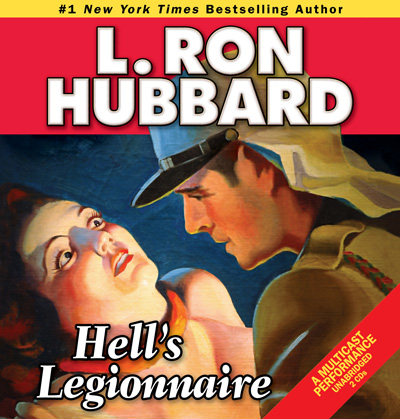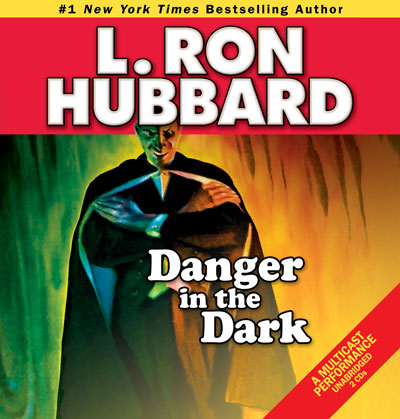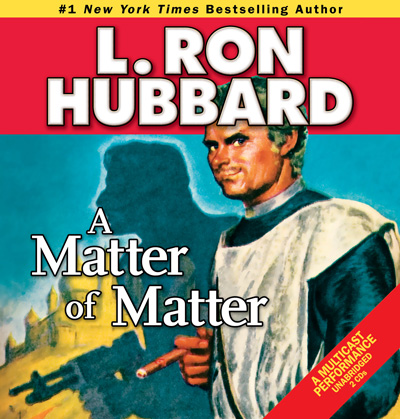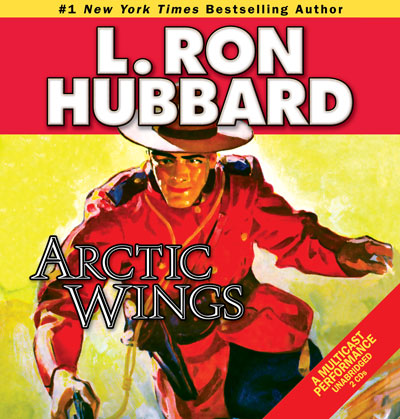All Frontiers Are Jealous Glossary
Stories from the Golden Age reflect the words and expressions used in the 1930s and 1940s, adding unique flavor and authenticity to the tales. While a character’s speech may often reflect regional origins, it also can convey attitudes common in the day. So that readers can better grasp such cultural and historical terms, uncommon words or expressions of the era, the following glossary has been provided.
Alexandria: the second largest city in Egypt and its largest seaport, extending about twenty miles along the coast of the Mediterranean Sea in north central Egypt.
Anglo-Egyptian: Anglo-Egyptian Sudan was the name of Sudan between 1899 and 1956, when it was jointly ruled by the United Kingdom and Egypt (which was then under British influence).
askaris: (Swahili) soldiers. During the period of European rule in East Africa, locally recruited askaris were employed by the British, Italian, Portuguese, German and Belgian colonial forces. They played a crucial role in the initial conquest of the various colonial possessions and subsequently served as garrison and internal security forces.
Bagandas: members of the largest ethnic group in Uganda. Their traditional homeland is Buganda, a former kingdom in the area north of Lake Victoria in southern Uganda, which became part of Uganda in 1962.
Bain: a human rainmaker and very important personage among the Dinka. A Bain is believed to be animated by the spirit of a great rainmaker who has come down to him through a succession of rainmakers. A successful rainmaker enjoys very great power and is consulted on all important matters. No Dinka rainmaker is allowed to die a natural death of sickness or old age as they believe that to do so, the tribe would suffer from disease and famine, and the herds would not yield their increase. Instead, when a rainmaker feels he is growing old and infirm, he tells his children he wishes to die. A large grave is dug in which he lies, surrounded by friends and relatives. For many hours, generally for more than a day, without food or water, he instructs those around him on how they are to act in the future. When he is done, he bids them to cover him up, upon which he soon dies of suffocation.
Banquo: in Shakespeare’s Macbeth, Banquo and Macbeth, generals in the Scottish army, hear prophecies from three witches that Macbeth will be named baron of Cawdor and that Banquo’s children will inherit the Scottish throne. Macbeth kills Duncan, the King of Scotland, thereby ascending the throne. He then has Banquo killed by his assassins to keep the prophecy from coming true. During a banquet, Macbeth is informed of the death of Banquo and of his son’s escape. The festivity is interrupted by Banquo’s ghost, invisible to the guests, which appears threateningly before Macbeth, haunting him.
Bantu: language of the Bantu people; a general term for over four hundred ethnic groups in Africa, from Cameroon to South Africa, united by a common language family and in many cases common customs.
blackwater fever: a serious, often fatal complication of chronic malaria, characterized by the passage of bloody, dark red or black urine.
Blue Nile: a tributary of the Nile; a river in East Africa, flowing north-northwest from Lake Tana in Ethiopia into the Nile at Khartoum.
braggadocio: used to describe a boasting person or braggart.
bwana: (Swahili) mister; sir; used as a title or respectful form of address.
chaining: measuring by use of a “Gunter’s chain,” an instrument that is made of links and is used in measuring land. It consists of 100 links, each link being 7.92 inches in length, with the total length of 66 feet or 1/10th of an acre.
coaming: a raised rim or border around an opening in a ship’s deck, designed to keep out water.
copra bugs: beetles that cause damage to copra, the dried white flesh of the coconut from which coconut oil is extracted. They are metallic blue in color, but sometimes have a greenish luster. They are 1/12th of an inch long (3.5 to 5.5 mm).
Dark Continent: a former name for Africa, so used because its remote back country was largely unknown and therefore mysterious to Europeans until the nineteenth century. Henry M. Stanley was probably the first to use the term in his 1878 account Through the Dark Continent.
dhotīs: (Hindu) a long loincloth; a simple wrap around the waist that resembles a long skirt. It is folded in half up to the knees while working. It is worn in East Africa as well as in India.
Dinka: cattle-herding people of the Nile basin in southern Sudan. The men are warriors and guardians of the camp against predators: lions, hyenas and other enemy raiders.
EEA: Equatorial East Africa; the region of eastern Africa near the equator, primarily including Kenya and northern Tanzania.
eland: a large spiral-horned African antelope.
Eritrea: the northernmost province of Ethiopia, bordered by Sudan on the north and west, and the Red Sea on the north and east.
G-men: government men; agents of the Federal Bureau of Investigation.
half-caste: a person of mixed racial descent.
IDB: Illicit Diamond Buyer or Buying; a special police force that took in hand all crimes involving diamonds.
Italian Somaliland: an Italian colony that lasted, apart from a brief interlude of British rule, from the late nineteenth century until 1960 in the territory of the modern-day East African nation of Somalia.
Khartoum: the capital of Sudan and of Khartoum State. It is located at the point where the White Nile, flowing north from Uganda, meets the Blue Nile, flowing west from Ethiopia. The merger of the two Niles is known as “the Mogran.” The merged Nile flows north towards Egypt and the Mediterranean Sea.
Kieta: the principal harbor on the island of Bougainville, the northernmost and largest of the Solomon Islands.
Kimberley: the capital of the Northern Cape, a large, sparsely populated province in South Africa. Kimberley is synonymous worldwide with diamonds. In 1871, diamonds were found on a small hill that became known as Colesberg Kopple (later Kimberley). It was here that the famous Star of Africa was found, a 530.20-carat diamond, and other giant sparklers far too big for a ring.
kwenda: (Swahili) move; proceed.
Lady Achilles to sulk in my netting: in reference to the Trojan War, where the great warrior Achilles sulked in his tent after an argument, refusing to fight.
Lake Salisbury: a lake in Uganda that provides a conduit for the waters north of Mount Elgon (the fourth highest mountain in East Africa, located in the eastern part of Uganda on the border with Kenya) that run into the Nile system.
Lake Tanganyika: a lake in central Africa. It is the longest freshwater lake in the world.
Madi: a central Sudanic language of the Madi people, an ethnic group living mainly in parts of Sudan and Uganda.
Masai: the language of a people living in Tanzania and Kenya.
Mauser: a bolt-action rifle made by Mauser, a German arms manufacturer. These rifles have been made since the 1870s.
memsahib: (Swahili) respectful greeting to one’s female employer or upper-class rich woman.
mnyapara: (Swahili) headman, especially of a caravan or an expedition.
Mogadishu: the largest city in Somalia, and its capital. Mogadishu lies on the Indian Ocean coast, and the city has served as an important regional port for centuries.
Mombasa: the second largest city in Kenya, lying on the Indian Ocean. In 1894 the British government declared a protectorate over Kenya, calling it the East African Protectorate. In 1901 the first railway line was completed from Mombasa to Kisumu, a city in the southwestern part of Kenya.
Mount Alak: former name of a mountain located in south central Sudan. It is part of the Dongotona mountain range bordering Uganda.
mpishi: (Swahili) cook.
Nairobi: the capital and largest city of Kenya in the south central part of the country. Founded in 1899, it became the seat of government for British East Africa in 1905 and capital of independent Kenya in 1963.
ndiyo: (Swahili) yes.
Nilote: a native and inhabitant of the banks of the Upper Nile; a member of any of several peoples from East Africa and Sudan.
panga: (Swahili) machete; a cleaverlike tool that looks like a very large knife. The blade is typically eighteen to twenty-four inches long. The panga has a broad blade and a squared-off tip.
parietal: either of two large bones that together form the sides and top of the skull.
placer: to obtain minerals from placers (deposits of river sand or gravel containing particles of gold or another valuable metal) by washing or dredging.
posho: maize flour or ground maize, a staple starch component of many African meals, especially in southern and East Africa.
Punch: the chief male character of the Punch and Judy puppet show, a famous English comedy dating back to the seventeenth century, by way of France from Italy. It is performed using hand puppets in a tent-style puppet theater with a cloth backdrop and board in front. The puppeteer introduces the puppets from beneath the board so that they are essentially popping up to the stage area of the theater.
recorder: a survey party’s noteman; the member of a survey team whose job it is to assist surveyors in measuring angles, distances and elevations, and to record the measurements.
Robinson Crusoe: the protagonist and narrator in the novel The Life and Strange Adventures of Robinson Crusoe, by English novelist Daniel Defoe (1660?–1731). The novel follows Robinson Crusoe’s survival and perseverance through storms, enslavement and a twenty-eight-year isolation on a desert island.
rodman: in surveying, a person who carries the leveling rod, a light pole marked with gradations, held upright and read through a surveying instrument.
RS: Reuters Service, the world news and information organization; in October 1851, Paul Julius Reuter (1816–1899), a German-born immigrant, opened an office in the city of London that transmitted stock market quotations between London and Paris. Reuters, as the agency soon became known, eventually extended its service to the whole British press as well as to other European countries. It also expanded the content to include general and economic news from all around the world.
sahib: (Swahili) master.
Saint Vitus’ dance: a nervous disorder characterized by rapid, jerky, involuntary movements of the body.
Scheherazade: the female narrator of The Arabian Nights, who during one thousand and one adventurous nights saved her life by entertaining her husband, the king, with stories.
schooner: a fast sailing ship with at least two masts and with sails set lengthwise.
Sennar: a state in Sudan; a town on the Blue Nile and the capital of the state of Sennar.
shots: estimations of distance or altitude by the use of a surveying instrument.
Sobat River: a river of northeastern Africa, the most southerly of the great eastern tributaries of the Nile.
Solomon Islands: a group of islands northeast of Australia. They form a double chain of six large islands, about twenty medium-sized ones and numerous smaller islets and reefs.
Soroti: the main commercial and administrative center of the Soroti District in eastern Uganda, a country in East Africa bordered on the east by Kenya and the north by Sudan.
spider webbing: cross hairs; either of two fine strands of wire crossed in the focus of the eyepiece of an optical instrument for surveying and used as a sighting reference. During World War I, the threads of some spiders were used as cross hairs in instruments.
SR: Sudan Railway.
Stanley: Sir Henry Morton Stanley (1841–1904), journalist and explorer of Africa. He was among the most accomplished and noted European explorers of Africa and his work played an important part in bringing about the European colonization of African territory in the late nineteenth and early twentieth centuries. He is best known for locating Scottish missionary-explorer David Livingstone, who had been reported missing in East Africa in 1870. Upon finding him in 1871, Stanley greeted him with the famous words: “Dr. Livingstone, I presume?”
stripe: 1. to strike; to lash. 2. a stroke or blow, as with a whip.
Sudan Railway: railway system in Sudan, linking most of the major towns and cities. Sudan is bordered by Egypt to the north, the Red Sea to the northeast, Ethiopia to the east and Kenya and Uganda to the southwest. The first line was built in the 1870s and was a commercial undertaking. It was extended in the mid-1880s and again in the mid-1890s to support the Anglo-Egyptian military campaigns.
sudd: the name given to the vegetation obstruction that has, at various dates, closed the waters of part of the Nile to navigation. The abundant vegetation that grows along the banks is loosed by storms into the river where it drifts until it lodges on some obstruction and forms a dam across the channel and into blocks that are sometimes twenty-five miles long and fifteen to twenty feet below the surface. These masses of decayed vegetation and earth, resembling peat in consistency, are so much compressed by the force of the current that men can walk over them everywhere. In parts, elephants could cross without danger.
Tanganyika: a former country of east-central Africa. A British territory after 1920, it became independent in 1961 and joined with Zanzibar to form Tanzania in 1964.
ten-seventy-five by sixty-eight: a Mauser rifle with 10.75 x 68 mm cartridges. They were used to shoot elephants for their ivory tusks.
.300 Scott rifle: a sporting rifle that uses .300-caliber ammunition. With the caliber of bullet used being so high, the muzzle blast is extremely loud and bystanders can sometimes feel the shock wave.
transit: a surveying instrument surmounted by a telescope that can be rotated completely around its horizontal axis, used for measuring vertical and horizontal angles.
Tsavo: a region of Kenya located at the crossing of the Uganda Railway over the Tsavo River. It is the largest national park in Kenya and one of the largest in the world. Because of its size the park was split into two, Tsavo West and Tsavo East, for easy administration. Tsavo achieved fame in The Man-eaters of Tsavo, a book about lions who attacked workers building the railroad bridge.
Tuaregs: members of the nomadic Berber-speaking people of the southwestern Sahara in Africa. They have traditionally engaged in herding, agriculture and convoying caravans across their territories. The Tuaregs became among the most hostile of all the colonized peoples of French West Africa, because they were among the most affected by colonial policies. In 1917, they fought a vicious and bloody war against the French, but they were defeated and as a result, dispossessed of traditional grazing lands. They are known to be fierce warriors; European explorers expressed their fear by warning, “The scorpion and the Tuareg are the only enemies you meet in the desert.”
Uganda Railway: a historical railway system linking the interiors of Uganda and Kenya to the Indian Ocean at Mombasa in Kenya. The line started at the port city of Mombasa in 1896 and reached Kisuma in 1901 on the eastern shore of Lake Victoria. Despite being called “the Lunatic Line” by its detractors, the railway was a huge logistical achievement and became strategically and economically vital for both Uganda and Kenya.
Uriah Heep: the hypocritical and devious clerk in Dickens’ novel David Copperfield. With eyes of red brown, he was high-shouldered, bony, and had a long, lank skeleton.
Webley: Webley and Scott handgun; an arms manufacturer based in England that produced handguns from 1834. Webley is famous for the revolvers and automatic pistols it supplied to the British Empire’s military, particularly the British Army, from 1887 through both World War I and World War II.
White Nile: the part of the Nile that flows northeast to Sudan and is approximately 500 miles (804 km) long.
Yank: Yankee; term used to refer to Americans in general.











